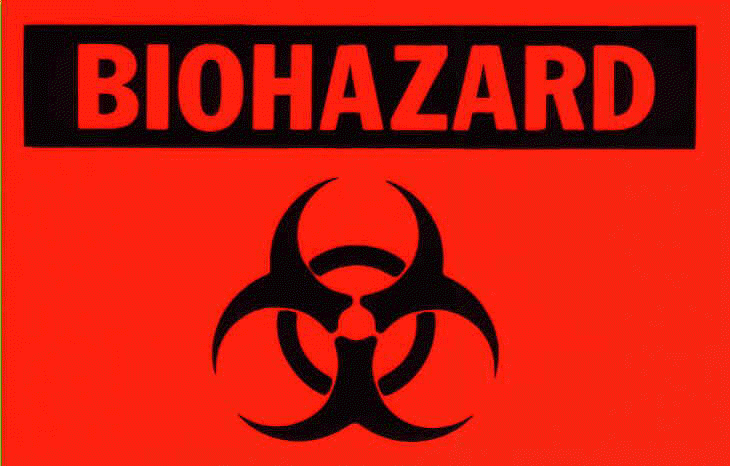Bloodborne Pathogens Part 1
All individuals who work in a clinical setting, medical laboratory, healthcare institution, or research facility may come in contact with body fluids from another person. This places them at high risk for coming into contact with bloodborne pathogens. But what are bloodborne pathogens?
Blood-borne pathogens are organisms (viruses, bacteria, fungi) that can cause potentially serious and fatal diseases. To be safe from blood-borne pathogens requires being up to date on the information and practicing avoidance.
Today nearly 5.6 million healthcare workers in the US regularly encounter blood-borne pathogens in their daily work. Unfortunately despite the best precautions, a few healthcare workers continue to develop signs and symptoms of an infection every year. The only way to protect yourself is by being proactive and using standard infectious disease protocols.
What Are Bloodborne Pathogens?
By definition, bloodborne pathogens are disease-causing organisms that can be transmitted from one person to another, through blood or other bodily fluids or materials. They include the following:
- Blood
- Serum
- Genital secretions
- Semen
- Amniotic fluid
- Cerebrospinal fluid
- Saliva
- Peritoneal, Pleural, and synovial fluid
Unlike blood, the transmission of bloodborne pathogens from other body fluids is not common. In general, urine, saliva, sweat, and fecal material are said to be low-risk materials for transmission. However, most institutions recommend wearing appropriate PPE and taking universal precaution measures. On the other hand, exposure to genital secretions or semen is considered a high risk for transmission of bloodborne pathogens. Of course, the risk also depends on the type of activity (ie vaginal, anal, or oral intercourse).
Examples of Blood borne pathogens
The majority of blood-borne pathogens tend to occur after contact with blood. Classic examples of bloodborne pathogens include the following:
Hepatitis B, C
HIV
Malaria
Zike virus
West Nile virus
Ebola
Hepatitis B, C, and HIV make up the vast majority of blood-borne pathogens today.
Once acquired, these blood-borne pathogens can cause both acute and chronic illnesses. These illnesses may present with fever, weakness general malaise, jaundice, weight loss, rash, etc. The condition may flare up now and then. To date, only hepatitis B can be prevented by vaccination, but there is no cure for hepatitis C or HIV.
The OSHA Bloodborne Pathogens Standard
In 1991, OSHA (the Occupational Safety And Health Administration) published the first guidelines on blood-borne pathogens. This guideline recommended employers be proactive and take steps to decrease the employee’s risk of exposure to blood-borne pathogens. The OSHA standard describes which employees are at risk, what the common bloodborne pathogens are, and the steps to lower the risk of transmission. The OSHA bloodborne pathogen standard has the following mandatory steps for employers:
- Develop an Exposure Control Plan that has to be available to all employees. It also needs a regular update every year
- Enforce the practice of universal protocol
- Ensure that physical steps like engineering precautions are in place. This includes availability of sharps disposal bins, self sheathing needles, and needleless procedures where feasible
- Ensure that employee work practices are safe and done in a manner that minimizes the risk of exposure
- Have in place proper methods for handling and discarding infected laundry
- Have in place methods for sanitizing infected surfaces
- That employees have individual protective equipment like gloves eye protection masks and gowns
- That free hepatitis B vaccination is available to all employees. Ten days prior to any tasks, the employee needs to receive the hepatitis B vaccine
- Ensure that all potentially infected individuals have free post-exposure examination according to CDC guidelines
- Have a reporting mechanism for all documented injuries to potential bloodborne pathogens
- Regularly educate workers about the risk of bloodborne pathogens, place signage throughout the facility and use proper labels
Revised OSHA Blood Borne Pathogen Standard
In 2001, OSHA revised the bloodborne pathogens standard and included the Needlestick Safety and Prevention Act. In addition, it also made more recommendations for employers which include the following
- Documenting all sharp injuries within the facility, the type of device, and the seriousness of the injury
- Maintaining a sharp injury data bank
- An expanded definition of engineering controls
- Ensuring that novel needle and sharp technology changes also have exposure control protocol in place



